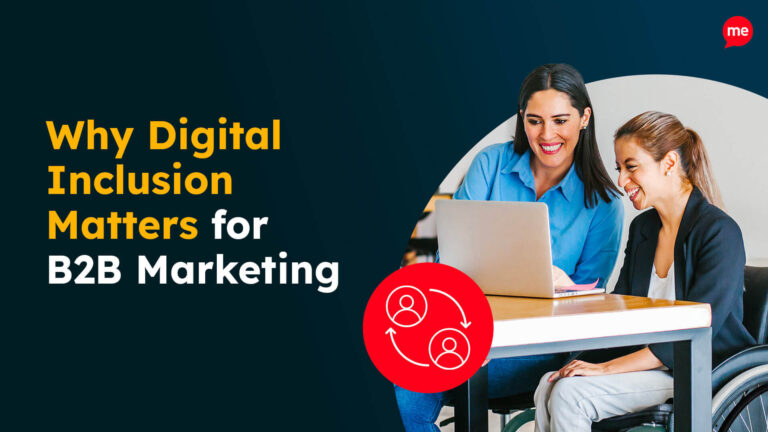In 2025, marketers must lead, not follow by putting website accessibility at the heart of their strategies.
Inclusion should never be an afterthought. Fact. Brands that prioritise digital marketing accessibility set themselves up for success in ways that competitors who don’t simply cannot match.
Are your organisation’s marketing efforts inclusive? If not, now is the time to get ahead of the curve, adapt your marketing mix, and embrace accessibility best practices.
In this handy article, we’ll outline the key digital marketing trends shaping the online world to help forward-thinking businesses lead rather than follow.
The Top 5 Digital Marketing Trends for 2025
Embracing change is a challenging prospect for any organisation. But, embrace it you must, as only marketers who face the emerging forces listed above head-on will be able to position themselves as industry leaders in the increasingly complex digital landscape. Here are the key trends that we expect to dominate in 2025.
1. Website Compliance
The European Accessibility Act (EAA) 2025 is a game-changing regulation designed to ensure that digital products and services are accessible to everyone, including people with disabilities. This isn’t just a guideline; it’s a legal requirement that applies to all businesses operating within the EU and those selling to EU markets, regardless of location.
Set to take effect on June 28, 2025, the EAA will impact both public organisations and private companies with over 10 employees or annual revenue exceeding €2 million. For marketers, this means your websites, apps, and e-commerce platforms must comply with WCAG 2.1 standards—the internationally recognized benchmark for digital accessibility.
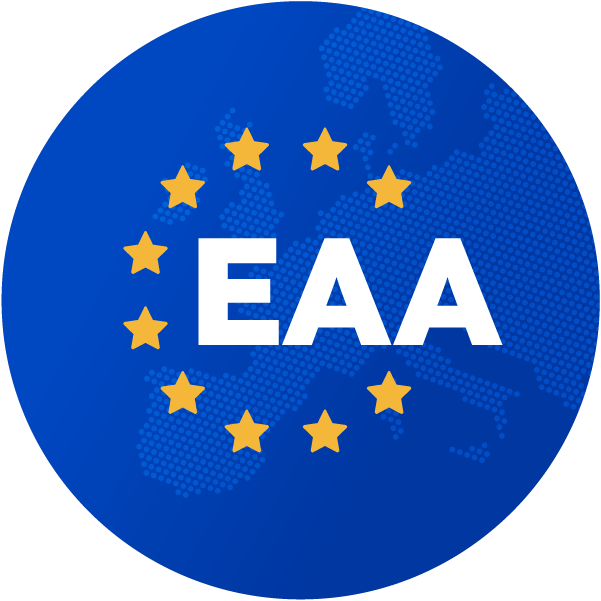
- Failing to meet these standards can result in serious consequences for your organisation, including:
- Financial risks: Fines and legal action.
- Reputation damage: Negative public perception.
- Revenue loss: Reduced market opportunities due to inaccessible services.
For marketers, the EAA is more than compliance; it’s an opportunity. Ensuring your digital presence is inclusive not only mitigates risks but also enhances user experience and expands your audience reach. Accessibility is good for people – and good for business. You should:
- Make sure your website is compliant with WCAG 2.1 – the globally renowned gold standard when it comes to web accessibility.
- Make multimedia content accessible by providing alternative text for images, captions and transcripts for video and audio content, and accessible media player controls.
- Ensure 100% keyboard accessibility via tab key navigation with accessible focus indicators and skip navigation links.
- Design inclusive colour schemes with sufficient contrast ratio between the text and background.
- Optimise tabs, labels, fieldset, and legends to make online forms and PDFS accessible to screen readers.
- Set proper language attributes and providing suitably descriptive titles, headings, and button text.
- Ensure responsive mobile design with optimised touch targets and screen reader compatibility.
Need help getting your online content up to EAA standards?
The Recite Me Accessibility Checker is the perfect starting point. Our proprietary software makes swift work of identifying non-compliant elements based on Web Content Accessibility Guidelines (WCAG), then generates a prioritised fix queue for improvements.
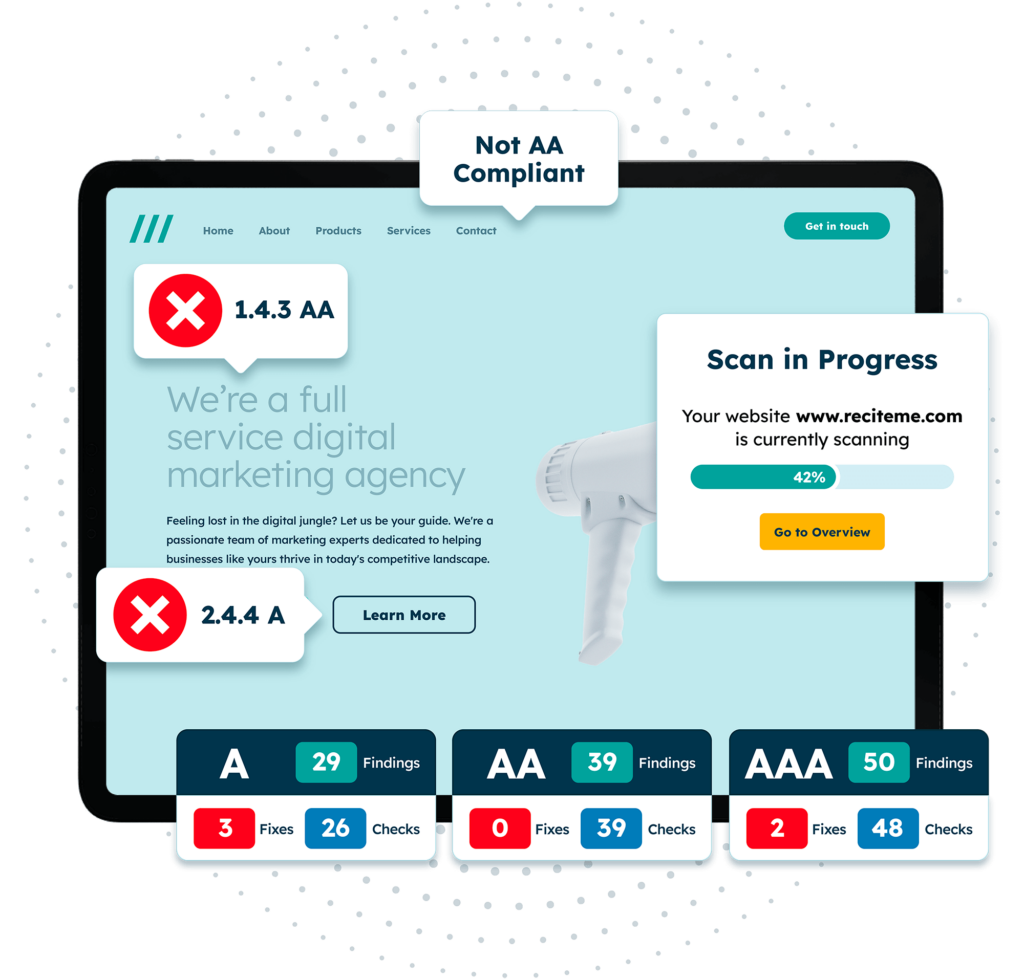
2. The AI-First Approach
Let’s face it: artificial intelligence is here to stay. By implementing AI tools, brands can ensure marketing efforts are both efficient and tailored to the needs of a diverse user base. Here’s a list of ways progressive companies can harness the power of AI to guarantee marketing wins:
- Marketing personalisation: Personalisation is a necessity, as 89% of marketers report a positive ROI from personalised campaigns. AI-powered tools like ChatGPT facilitate hyper-personalisation at scale.
- Consumer insights: AI tools can analyse vast data sets in seconds and generate reliable insights about amounts customer trends and preferences.
- Predictive analytics: AI can help teams optimise marketing campaigns by forecasting future behaviour based on historical data.
- Automated customer support: The evolution of conversational AI provides opportunities to streamline workflows by integrating chatbot support on websites and apps.
- Improved A/B testing: AI models can effortlessly optimise A/B testing to help organisations make informed decisions for improved campaign performance.
- Dynamic pricing strategies: AI algorithms can analyse market conditions and customer behaviour, allowing sales teams to adjust pricing in real time to maximise revenue.
As an industry leader in digital accessibility best practices, AI has already been incorporated into many of Recite Me’s accessibility software and solutions. For example, our Page Summariser function uses AI technology to condense webpage content into easy-to-read summaries in customisable ‘easy’, ‘intermediate, or ‘advanced’ reading levels. By responsibly integrating AI into our toolbar, Recite Me remains at the forefront of accessibility technology, breaking down digital barriers and improving the browsing experience for all.
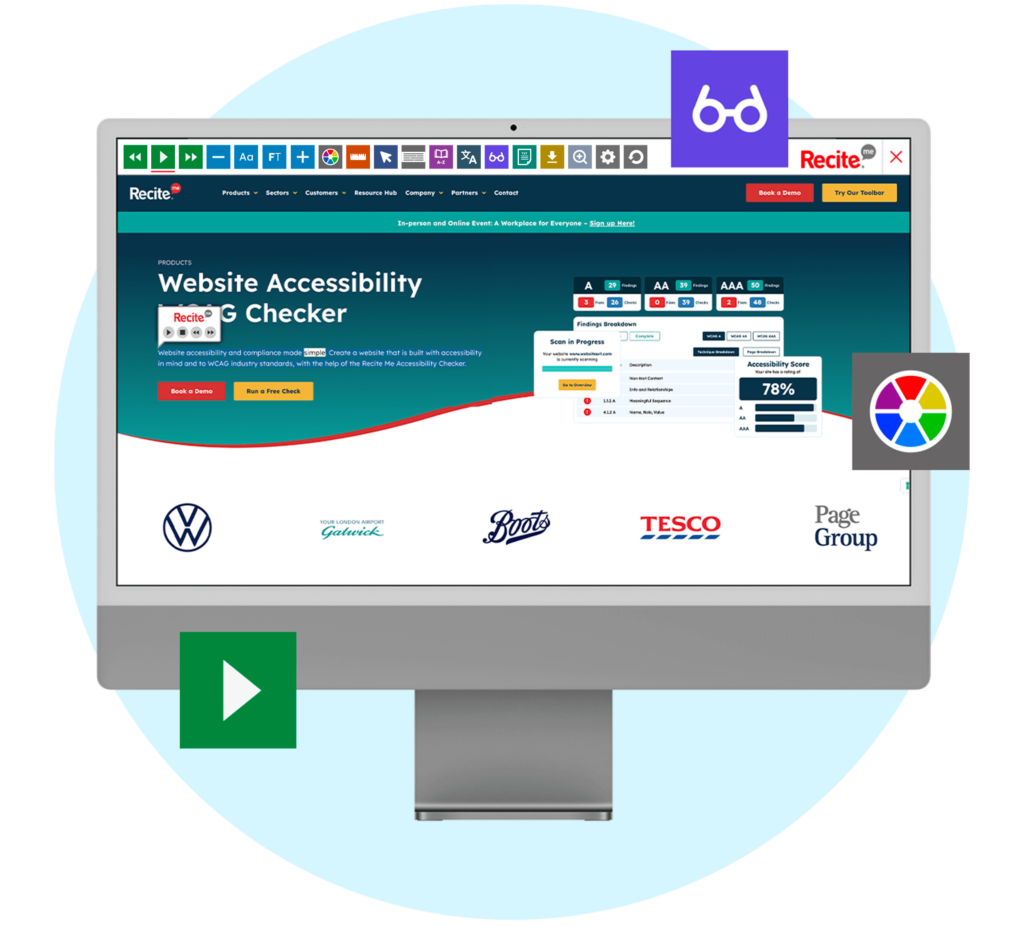
3. The Rise of Voice Marketing
It’s important to note how voice search optimization differs from traditional SEO as users ask questions conversationally. Instead of typing “best coffee shops in Seattle,” a voice search might be “What are the best coffee shops near me?” Brands should focus on long-tail keywords and natural language to capture this growing audience.
Thanks to voice-activated devices like Alexa, Google Assist, Siri, and the integration of conversational AI tools, voice marketing is becoming just as critical a factor in modern-day marketing as SEO. Consumers already expect to be able to explore products and services using voice commands, and the quality of the information that’s returned is often pivotal in buying decisions. Therefore, to ensure optimum conversions, marketers must:
- Optimise content for voice search and text-to-speech readability.
- Adopt conversational language patterns that provide simple, concise, and valuable information that can be easily conveyed through voice assistants.
- Include more voice marketing into the overall marketing mix using platforms like TikTok and Instagram Reels.
Tools like the Recite Me Assistive Toolbar help with voice marketing optimisation, as website visitors can activate text-to-speech and have marketing copy read aloud in 65 different languages.
4. The Importance of Brand Loyalty and Brand Retention
In the increasingly competitive digital marketplace, cultivating brand loyalty is more important than ever. Why? Because acquiring a new customer can cost five times more than retaining an existing one, and 33% of customers will consider switching companies after just one poor experience. Here’s a list of best practices for inclusive marketing strategies that encourage maximum retention:
- Ensure your website and digital content are accessible to all, including those with disabilities and individuals using screen readers and other assistive technologies.
- Communicate using straightforward, jargon-free language that resonates with a diverse audience.
- Feature diverse voices and representations in your marketing materials.
- Actively seek feedback from a wide range of customers, including those with disabilities.
- Educate your marketing team about the importance of accessibility and inclusion.
- Communicate your commitment to inclusion by publishing an accessibility statement on your website.
Recite Me offers several free resources that can help you market for maximum retention. Check out our accessibility statement generator and introductory website accessibility training course to learn more.
5. An Emphasis on Social Media Marketing
With audiences worldwide becoming more diverse and interconnected than ever, social media remains a powerful tool for forging connections with potential consumers. It’s also a great place to meet consumers where they are, as fifteen of the biggest social media platforms have at least half a billion active subscribers.
However, as with your website and other digital marketing materials, social media content must be inclusive if you’re to harness the full potential of any platform. Here are a few tips to ensure optimum accessibility:
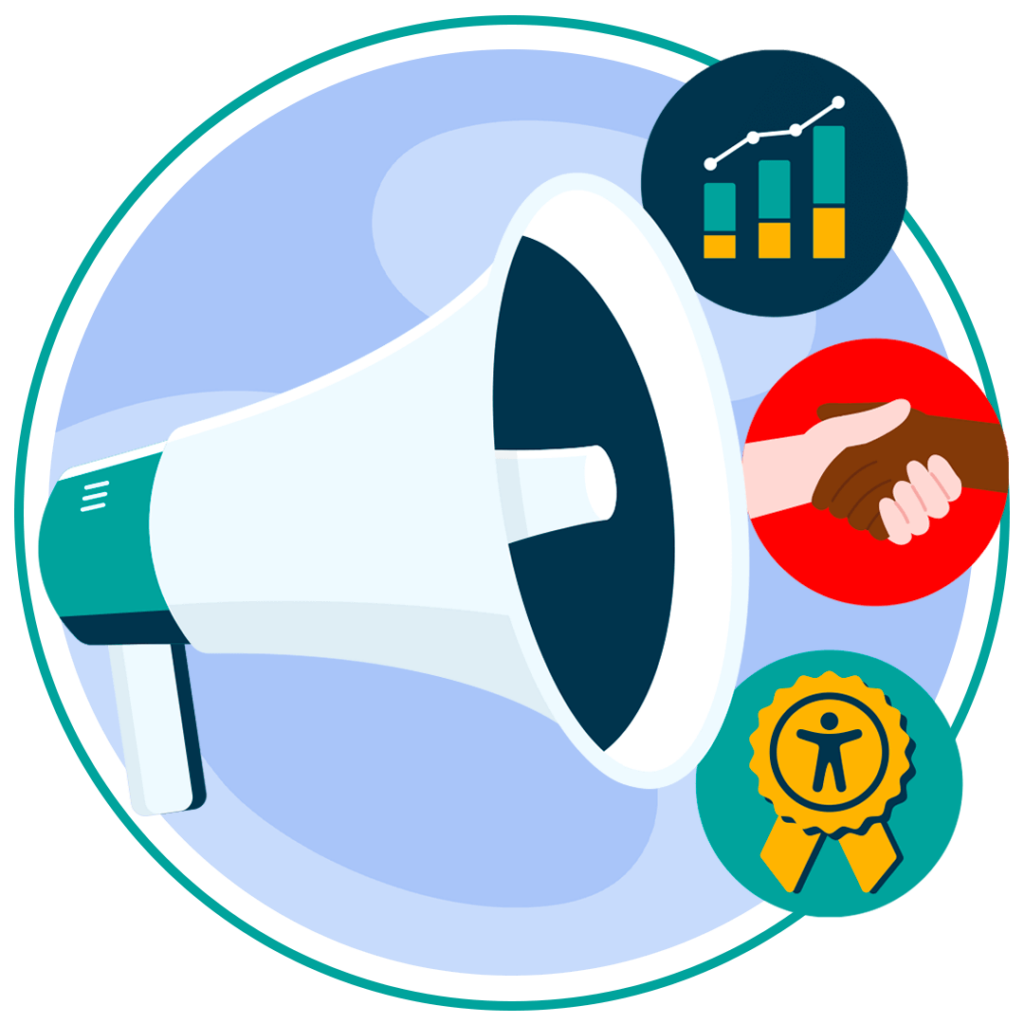
- Ensure all links, interactive elements, and CTA buttons are easy to identify without relying on colour or hovering over the text with a cursor.
- Provide alternative text for every image, graphic, and video.
- Display accurate closed captions and audio descriptions on all video content.
- Ensure adequate opacity in instances where text is overlaid onto images.
- Use Camel Case hashtags.
Need help with Inclusive Social Media Marketing?
Recite Me a range of guides and free resources that can help. Check out our Inclusive Marketing Checklist, Accessibility and Inclusion Toolkit, and Inclusive Communications Guide to learn more.
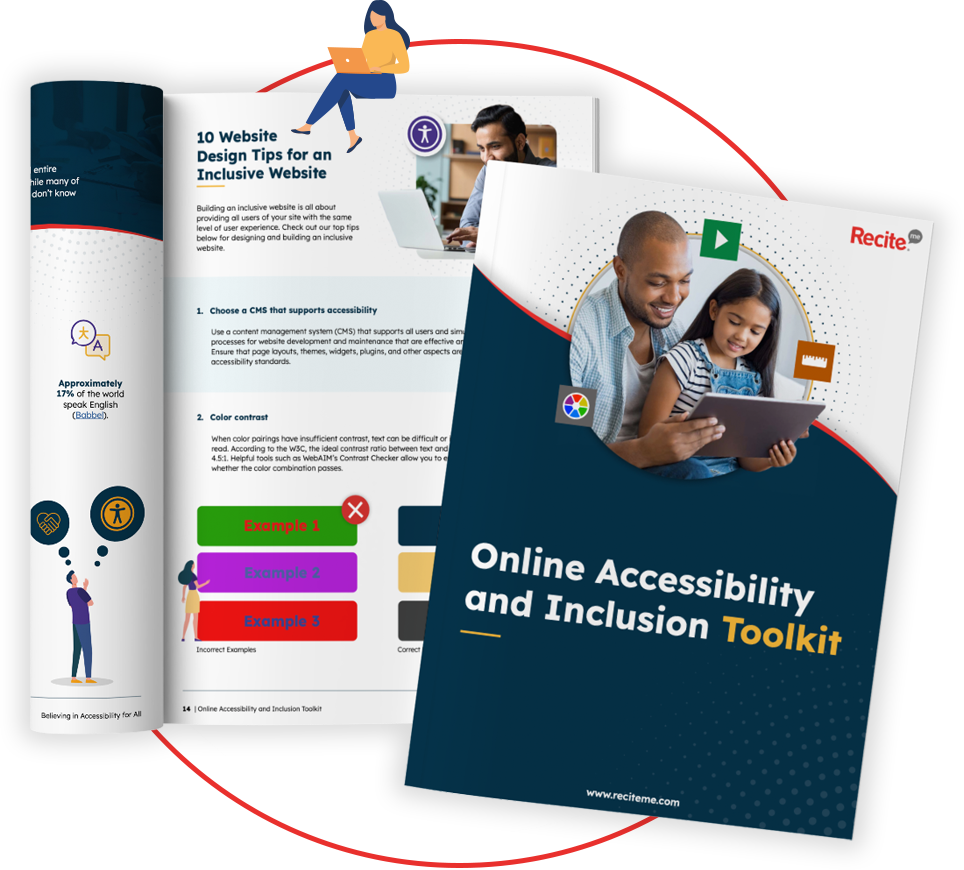
Lead, Don’t Follow
Standing still on integrating inclusion and accessibility best practices into your marketing mix is not an option. Every moment you delay is a missed opportunity to connect with a broader audience, build loyalty, and enhance your brand’s reputation.
Take these steps today to get started on your inclusive marketing journey:
- Contact our team for more advice about EAA standards and resources that can help you up your inclusive marketing game.
- Run a free check of your website for WCAG 2.2 AA compliance.
- Try our toolbar to see the difference it can make to diverse audiences requiring personalised customisation.
Together, we can create a marketing environment that welcomes all, amplifies diverse voices, and drives business success.

